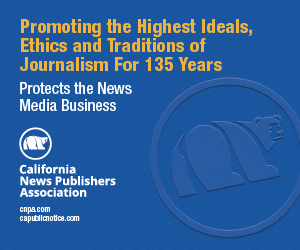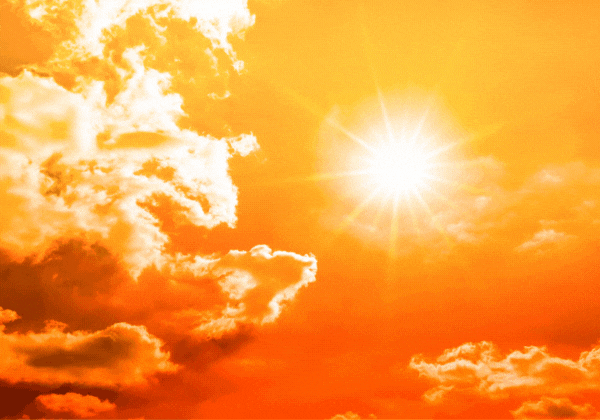From left to right: Meili Criezis, Global Network on Extremism and Technology Associate Fellow; Colin P. Clarke, Senior Research Fellow, The Soufan Center; Ricardo Corzo Moreno, theologian specializing in Latino churches
By Pilar Marrero, Ethnic Media Services
The day before the January 6th attack on the Capitol, hundreds of Trump supporters gathered near the building for a “Jericho March,” a reference to the biblical story where Israelites circle the city of Jericho until the “walls of the city fall down flat.” On the day of the insurrection, Christian symbols and activities were in full display among the crowd just as much as Trump flags and anti-Semitic and neo-Nazi symbols.
“That day at the Capitol among the protesters we saw the Bible, the cross, the rosary, people preaching, kneeling and praying, we saw Christian worship and, even before the assault, people were invoking God´s name to do the actions they were to perform,” said Ricardo Moreno, a theologian speaking on a recent EMS video conference. “The question we have to ask is why?”
Religion, and in particular, Christian fundamentalism, has proven to be a key driver of pro-Trump activism along with white nationalism and white supremacy. So, too, is the conspiracy theory known as Q-Anon whose followers were much in evidence on Jan. 6, along with Q symbols. Some of the best-known insurrectionists were Q followers, notably the Q-Anon “Shaman” who wore a headdress with horns, and Ashley Babbitt, an Air-Force veteran who was shot when she tried to enter the Capitol through a broken window.
“What you call the far right is a very broad umbrella, a broad tent and under there you can find groups like the Proud Boys, the Oath Keepers, the 3 percenters,” explained Colin P. Clarke, a senior research fellow at Soufan Center who also spoke on the video conference. “There´s a very decentralized network, a hodgepodge of everything from Q-Anon to what I would call religious zealots or Christian extremists,” Clarke said, adding that many Trump followers believe Trump represents “the second coming of Christ.”
Meili Criezis, a program associate at Polarization and Extremism Research Innovation LAB (PERIL) at American University, explained that Q-Anon followers believe there will be a “Day of Reckoning,” also known as “the Storm,” when the satanic cabal of pedophiles they believe exists in government institutions will be exposed and executed.
“There was a lot of discussion that this was the moment of the storm,” said Criezis, who also spoke at the biefing. All of these groups came together on Jan. 6 to “Stop the Steal,” to “take the Capitol back,” and to defend their leader.
The fervor Q-Anon has attracted among ordinary people not affiliated with white supremacy or even fundamentalist churches has prompted writers such as Adrianne La France of The Atlantic magazine to compare it to a new homegrown American religion.
Ricardo Moreno, who shares that view, noted that certain evangelical Christian groups, including numerous Latino congregations, have already “remade their faith in Donald Trump´s image…He bent elements of Christianity to his will…and many prophecies making the rounds of these groups said that Donald Trump would win the election.”
Moreno explained that part of the reason Trump has such a big following among Christian fundamentalists is that “no other administration, not even Bush, did as much to promote the Christian right agenda on social policy or gave hardliner evangelicals such exclusive access to the president.”
Trump´s backing of moving the US embassy in Israel to Jerusalem is a notable example, Moreno said.
“Only Donald Trump was willing to take the ill-advised foreign policy step of moving the embassy because for evangelicals the prophecy stays that once Jerusalem becomes the center of the world, we will have Armageddon and the second coming of Christ.”
Clarke took the alignment with fundamentalist beliefs one step further, pointing to similarities between “violent white supremacy and the Jihadi phenomena” promoted by ISIS.
“There are lots of similarities in the way they recruit and spread propaganda and even a strange fascination that white supremacists have with Jihadis. You wouldn´t think those two things coexist but they do,” Clarke said. “However, these groups still hate Muslims and everyone that is nonwhite”.
The embrace of a strong-man like Trump has a logical connection with “this authoritarian nature” in the evangelical subculture, Clarke added. “If you are a pastor of a big, huge mega church, then you are the preacher, and God´s chosen.”
Members of the supremacy group Proud Boys offered an evangelical prayer before walking to the Capitol, according to the New York Times. Along with the Christian imagery, Moreno said protestors exuded a “moral superiority” for their actions which was rooted in their religious beliefs.
Those beliefs won’t die with the end of the Trump presidency. “I am worried,” said Moreno. “The whole Evangelical Latino world in the US and Latin America, which I follow closely, went crazy when Trump lost the election, and they were convinced he was going to prevail. Even now, they think President Joe Biden is the devil that will destroy Christianity.”
Moreno expressed concern that this mixture of conspiracy theories, fundamentalist Christianity, and white supremacy “will become the new religion for a lot of people.”
Pilar Marrero is a journalist and author with long experience in covering social and political issues of the Latino community in the United States. She is one of the foremost experts on immigration policy and politics in the US media world and has covered the issue extensively during her years as a reporter. Marrero is the author of the books “Killing the American Dream” and “El Despertar del Sueño Americano.” In October 2018, she was selected by her peers at CCNMA (Latino Journalists of California), as Latina Journalist of the Year.




